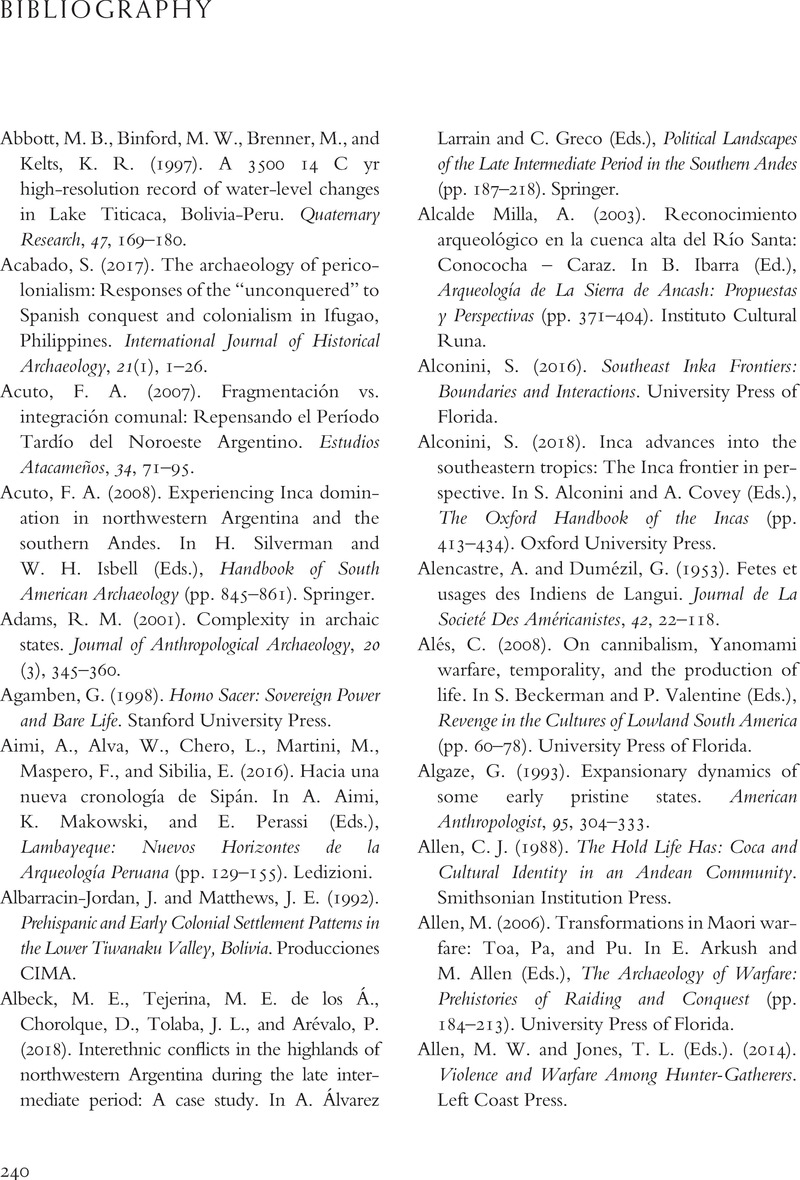Book contents
- War, Spectacle, and Politics in the Ancient Andes
- War, Spectacle, and Politics in the Ancient Andes
- Copyright page
- Dedication
- Contents
- Figures
- Maps
- Tables
- Preface and Acknowledgments
- One Introduction
- Two Severity and Spectacle
- Three Toward a Better Model of War
- Four Warrior Lords
- Five Us versus Them
- Six The Invention of Conquest
- Seven Conclusions
- Book part
- Notes
- Bibliography
- Index
- References
Bibliography
Published online by Cambridge University Press: 24 March 2022
- War, Spectacle, and Politics in the Ancient Andes
- War, Spectacle, and Politics in the Ancient Andes
- Copyright page
- Dedication
- Contents
- Figures
- Maps
- Tables
- Preface and Acknowledgments
- One Introduction
- Two Severity and Spectacle
- Three Toward a Better Model of War
- Four Warrior Lords
- Five Us versus Them
- Six The Invention of Conquest
- Seven Conclusions
- Book part
- Notes
- Bibliography
- Index
- References
Summary

- Type
- Chapter
- Information
- War, Spectacle, and Politics in the Ancient Andes , pp. 240 - 288Publisher: Cambridge University PressPrint publication year: 2022



